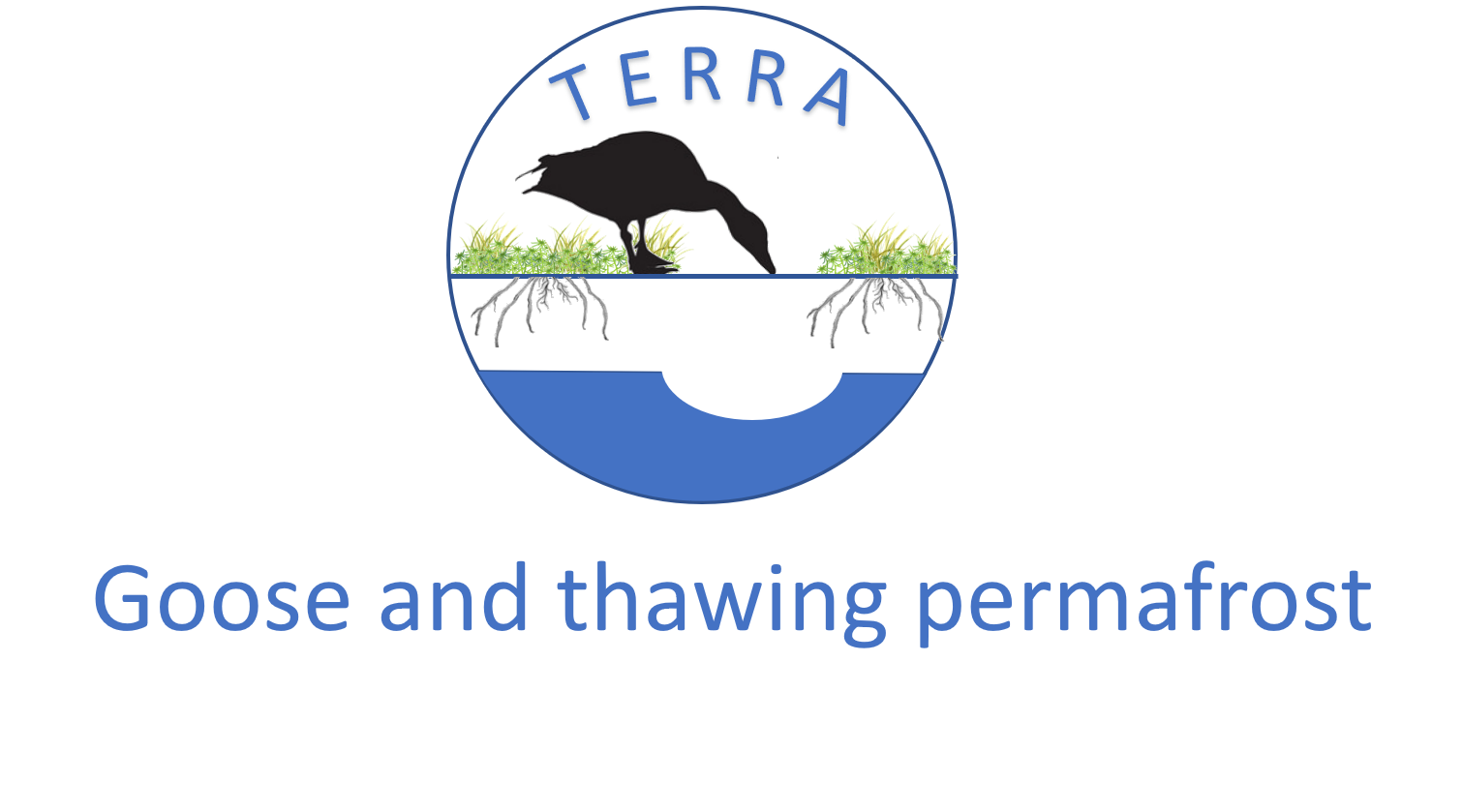WP1: Soil organic decomposition and nitrogen mineralization rates
With permafrost thaw, microbial communities in the soil surface will rapidly invade the deep soil layer previously frozen. One of the largest uncertainties is the contribution of these microbial communities to soil respiration and nitrogen mineralization rates in the newly exposed soil layers. An increase in temperatures will stimulate soil organic degradation and nitrogen mineralization. Further, the positive effect of soil warming on belowground processes could be magnified by goose grubbing which also increases summer soil temperatures and adds nutrient-rich faeces. What is largely unknown is how these warming effects will interact with the co-occurring changes in soil hydrology. Situations creating waterlogged or increasingly dry soil conditions could hamper microbial activity and decomposition processes, even at increased temperatures.
WP2: Mycorrhizal fungi and their role in plant nitrogen uptake and soil carbon sequestration
Mycorrhizal fungi, in particular ectomycorrhizal fungi (ECM) and ericoid mycorrhizal fungi (ERI) play a crucial role for both plant nitrogen uptake and ecosystem carbon dynamics and storage. Most of the stored carbon in arctic soils could be derived from mycorrhizal mycelium rather than from plant litter. We predict that fast growing grasses with a deeper rooting system should have a greater access to permafrost nitrogen compared to dwarf shrubs. On the other hand, dwarf shrubs which are often associated with EMC and ERI fungi with strong enzymatic activities will have a competitive advantage to acquire permafrost nitrogen. We expect both grubbing and rain on snow event to reduce plant access to permafrost nitrogen and decrease belowground carbon storage by reducing mycorrhizal mycelium: grubbing by causing physical soil disturbance and root damage, and rain on snow by causing severe frost damage to plants during the winter.
WP3: Microbial community composition and functioning
With enhanced soil temperatures, microbial activities associated with soil organic matter degradation, microbial respiration and nitrogen circulation should increase as new substrates are exposed by permafrost thaw. While bacterial responses should be largely confined to the labile soil organic matter, fungal communities have the potential to invade and degrade previously frozen complex forms of SOM and should be particularly favored. Previous analyses have shown that emission of CO2 is consistently higher than CH4 (methane) even under anaerobic conditions. Yet, we still do not know whether the low amount of CH4 emission is due to the fact there is no CH4 production in the soil or because CH4 is quickly oxidized by methane oxidizing bacteria. We predict that an increase in microbial respiration will lead to a more open (inorganic) nitrogen cycling and larger emission of CO2 over CH4. Situations creating conditions of water limitation should favor fungi over bacteria since fungi communities are better in coping with drought due to their stronger cell walls and extensive hyphal network. This should lead to increases in carbon emission but strongly reduce CH4 release from permafrost soils.

